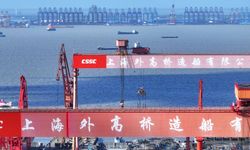This marked the highest Greek investment by deadweight tonnage (dwt) since 2013. Notably, European owners surpassed Asian counterparts in investment for the first time since 2018.
According to research by Clarksons Research on the 2023 shipbuilding market, global shipyard output grew by 10% year-on-year, reaching 35 million compensated gross tons (CGT). China played a pivotal role, delivering 50% of the output by CGT, surpassing South Korea and Japan, which delivered 26% and 14%, respectively.
China also dominated the shipbuilding market by leading in the production of bulkers, tankers, and containers. South Korea took the lead in liquefied natural gas (LNG) vessels.
New orders in 2023 reported a good flow, contributing to a 10% increase in newbuild prices. China not only dominated in output but also in ordering, producing 50% of the yard output. The analysis indicates a positive trend in the shipbuilding industry with recovering output and increasing prices.
Alternative fuels gained prominence, accounting for nearly 50% of the orderbook tonnage. The 2024 delivery profile is characterized by a dominance of container and gas vessels, while new orders leaned towards tankers and bulkers.
Despite the positive indicators, the orderbook increased by only 4% year-on-year, reaching 124 million CGT, with a total value of $367 billion. Approximately 50% of the orderbook by tonnage is now focused on alternative-fueled vessels. The forward yard cover stands at a robust ~3.5 years.
However, the industry also faced challenges, as the number of active yards (building above 20,000 dwt) declined, and shipyard capacity decreased by approximately 35% compared to peak production levels. The underlying fleet renewal requirements are emphasized, driven by aging fleets and the acceleration of emissions regulation.





